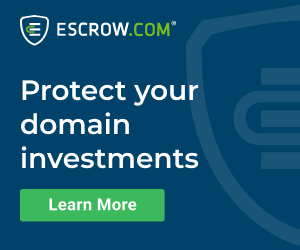
Domain names are getting stolen more often than what you think.
Let’s face it: the times of great deals regarding the so-called “coinage domains“, are long gone.
Back in 2004-2006 one could still get great deals for LLL .com and LLL .net domain names at various domain forums.
The definition of a “great deal” is subjective, but anything under $2,500 for a LLL .com and $300 for a LLL .net would be considered as such.
Almost ten years later, domainers that are either wet behind the ears or willing to acquire domain names with a questionable ownership record, are still falling prey to thieves and scammers.
In a series of threads over several forums, including one based in Russia, “tokarev” attempted to sell the domain names URD.net, 4460.com and poyn.com.
Logging in from Ukraine, the seller appeared willing to accept low $xxx for each domain. All three of these domains have a different WHOIS information, and URD.net appears to have been acquired from BuyDomains recently.
Once questioned about providing proof of ownership, the seller avoided giving any real answers, and claims to have sold 4460.com already at the Russian domain forum:
“Everything is okay with the name, dumb Americans for some reason saying wrong things. The domain has been sold. You could close the thread.”
These scams work as follows: the thief uses a stolen credit card or other compromised method of payment and buys the domain, often using a stolen account and credentials that belong to someone else. He then attempts to sell the domain for a small amount of money, less than its street value; this way, a quick sale is almost guaranteed!
Once the previous owners find out about the illegitimacy of the sale, they file a complaint; the end result is that the new owners, that may or may not be aware of the domain’s ownership status lose whatever money they paid for it, and the domain is reclaimed.
Sometimes, however, the domain thief gets away with it.
To avoid being taken for a ride by being sold stolen domain names, consider the following guidelines:
- Domains that appear to be selling for cheap, when their kind maintains a minimum value, are probably stolen.
- Use DomainTools and its historic WHOIS feature to identify and contact previous owners.
- Sellers with a new account at forums and zero trader feeback, are possibly trying to make a quick sale of questionable goods.
- Sometimes locale is a factor: Certain countries in Asia and Eastern Europe are notorious for harboring cybercriminals.
- With stolen domains, no form of payment offers any protection to the buyer. This includes escrow.
Play safe, trade only with reputable sellers and always verify a domain’s ownership before committing to a sizable investment.
Copyright © 2025 DomainGang.com · All Rights Reserved.












I know this story to well! As in one of your previous articles mentioning me losing a LLL.net. Good work for making people more aware!
To reduce the chances to buy a stolen domain use an escrow service that check the identity, apparently only eCOP.com do that for the moment.
Francois – What is the time frame you can secure fund reversals via eCop? SnapNames/Moniker can take a domain (and funds) back after 3 months.